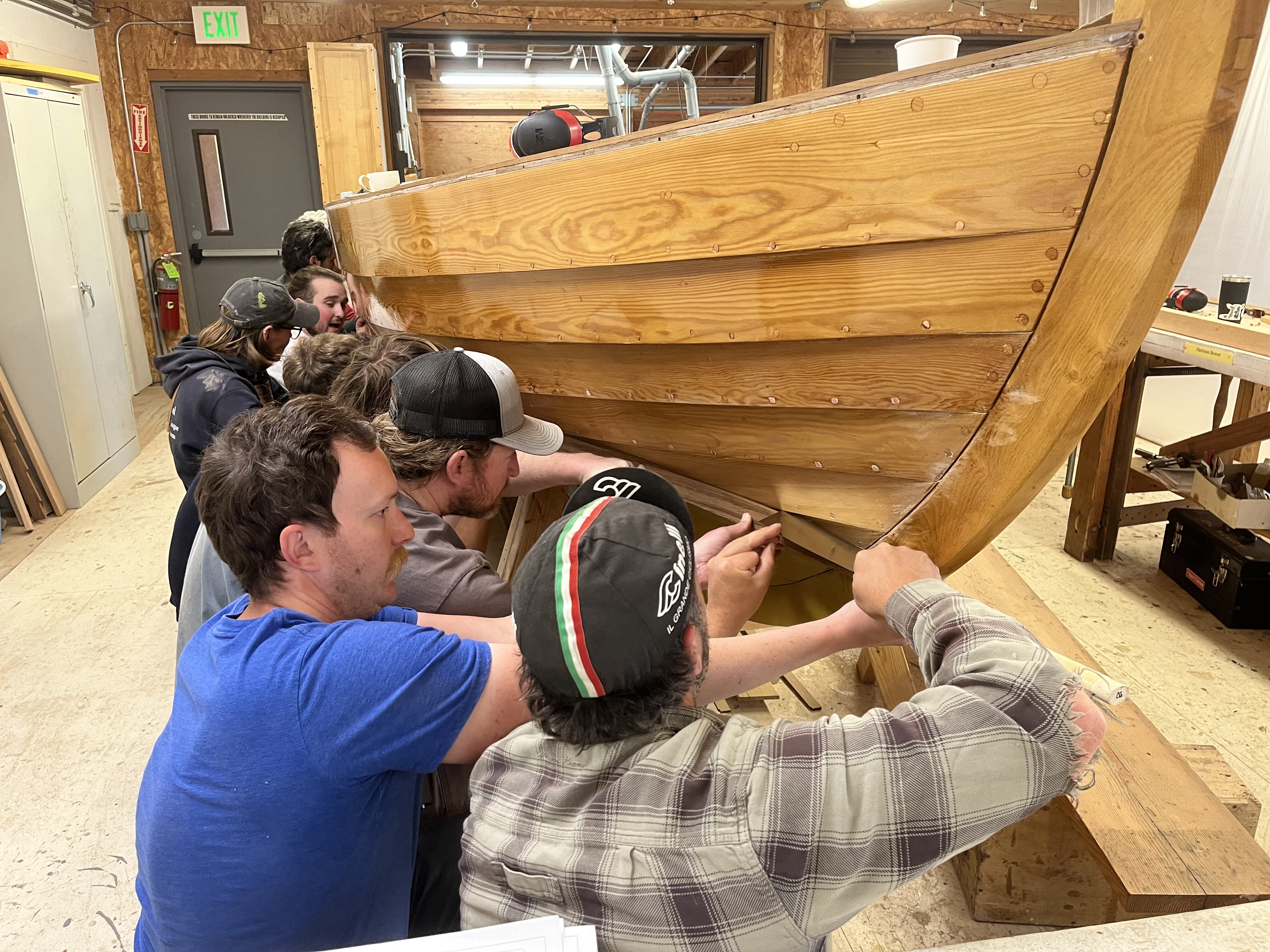Why We're Here - Choosing Wooden Boatbuilding School
A shared passion for craftsmanship
Corey Largo had bought an old wooden boat intending to undertake some serious blue-water cruising. In getting her ready for the adventure, however, he soon realized he was in way over his head. Having worked in search and rescue, he was keenly aware of the dangers facing sailors who knew nothing about how their boats work. So, he enrolled in the six-month marine systems program at NWSWB and is now taking the school’s 12-month wooden boatbuilding program. It’s a foundation that will tee him up for a more confident sail to Alaska and then to the Gulf of Mexico following graduation. “And I’ll be able to find boat-related work wherever I go.” It didn’t take Largo long to discover that one thing he loved about wooden boats was their intricacies. “If you can do these curvy things,” he realized, “you can build anything.”
Student Ezra Paskus had a policy administrator job with the Department of Agriculture’s SNAP program in Washington state. Hating the cubicle life, he felt great release working from home during COVID. When it came time to return to the office, new projects — and lots of stress — were in the pipeline. “I just didn’t want to do it,” he recalls. He wanted to work with his hands.
Gus Hynes quit his job as a motorboat pilot when COVID ravaged his industry. Despite having no real background in craftsmanship, he applied to wooden boatbuilding school. So did Alaskan Chris Kingsland. After weighing the multi-year educational requirements of a degree in physical therapy, he too chose the twelve months of Boat School, motivated in part by having enjoyed shop in high school.
New Englander Pearl Farley recalls her short and unsatisfying stay at college, save a two-week marine biology class on a ship in the Bahamas. She applied to the school in part because she’d heard of the beauty of the Pacific Northwest. “And it has already exceeded my expectations!” The area’s breathtaking combination of towering trees and network of shimmering bodies of water is exactly what gave rise Puget Sound’s lumber industry.
Cole Gindhart quit his computer software job to chase his passion for woodworking at Port Hadlock. Liam Rolfe was an unfulfilled engineer at a steel production plant. Like many engineers, they discovered it was a rewarding engineering challenge to “take a round object, make it flat, and then turn it into a curved object,” a playful way of characterizing the wooden boatbuilder’s job of turning tall trees into flat boards and then into a gracefully streamlined vessel.
When all is said and done, for many students NWSWB is about following a passion — whatever the combination of woodworking, craftsmanship, engineering, art, self-expression, or deliberate living. Working with their hands, especially with wood, is how some students define, or want to define, who they are.
That’s what Bob Prothero had in mind when he founded the Northwest School of Wooden Boatbuilding in 1981. “When you use a machine, you are limiting yourself to what the machine can do. You as a craftsman can do anything.”
From an article by Andrew Marble, author of Boy on the Bridge: The Story of John Shalikashvili’s American Success, a biography of America’s only foreign-born Chairman of the U.S. Joint Chiefs of Staff.

